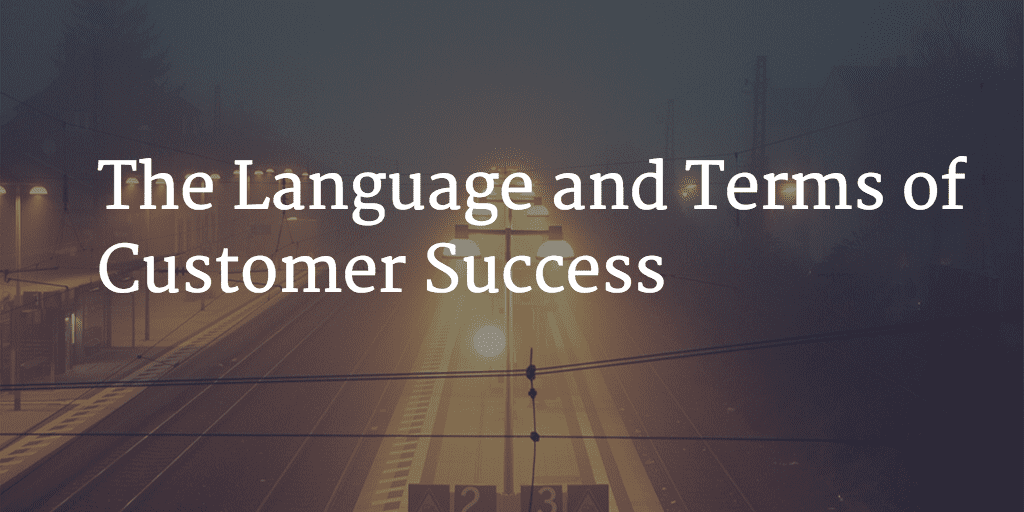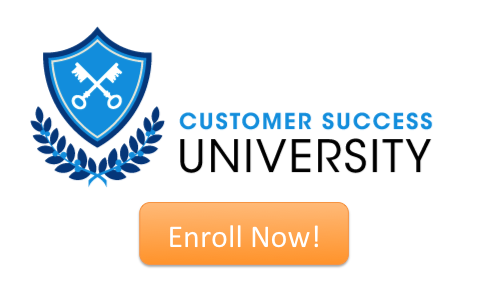Every job and market has their own language and Customer Success is no different.
You’ll pick up much of this very quickly but here’s a little primer on some of the most commonly used terms and their definitions.
One caveat – there are no hard and fast rules for many SaaS/Customer Success measurements so each company can be slightly different.
I’ll try to give you general definitions here and point out where there could be variances.
Retention – this is likely to be something you’ll be measured on. Retention basically means the rate at which you keep your customers and/or the revenue associated with your customer contracts. Let me clarify with a simplified example. You have 100 customers for whom you are responsible and their total contract value per year (ARR) is $1M and they are all on one-year contracts. In 2013, 92 of those customers renewed their contracts for a new total contract value of $980K. In this case, your customer retention is 92% and your revenue retention is 98%.
You will find lots of debate about whether/how you should count dollar retention. Should that number include upsells, price increases, etc.?
Churn – the opposite of retention. In the above example, your customer churn rate is 8% and your revenue churn rate is 2%. Your job as a CSM will often by simply defined as preventing churn.
Renewal – this is the act of getting a signature on a contract so that the customer’s subscription continues for another term. Many SaaS companies require a signed renewal contract every time a new term begins but many don’t. Keep reading.
Auto-Renewal – also known as “evergreen.” This simply means that you don’t ask for a signature from your customer at the time their contract term expires. These contracts automatically renew unless the customer notifies you otherwise.
Monthly Contracts – this is basically a form of auto-renewal but not really. A monthly contract simply means that there is no term in the customer’s contract. They can opt out at any time so there is no renewal event (signed or auto). You can think of these as if the customer is renewing (or possibly churning) every month. This is quite common in low-cost SaaS subscriptions especially where there is virtually no onboarding process.
Adoption – this term refers to customers’ use of your product. It’s short for “product adoption.” As a proxy for retention/churn, your daily tasks as a CSM will often revolve around improving your customer’s adoption of your product(s).
Engagement – refers to your, or your company’s, interactions with customers. Engagement can mean you calling a customer, Marketing sending them an email, a Sales person trying to sell them another product, or you doing a Quarterly Business Review. Any kind of interaction between you and your customer can be considered engagement. It can also refer to whether or not your customer responds or participates.
For example, Marketing will measure how customers engage with their email campaigns. Do they receive them (as opposed to bouncing)? Do they open them? Do they execute on the call-to-action (click or download)? You will likely have an engagement strategy for all of your customers. It might be the same for all or vary depending on the value of each customer. For a $100K customer, you may have weekly calls but for a $1K customer you may engage only when they are crying for help.
Annual Recurring Revenue (ARR) – also known as TCV (Total Contract Value), TAV (Total Account Value), ACV (Annual Contract Value), Annual Subscription Value (ASV), and many other terms. This is the way recurring revenue businesses are measured. It’s the annual contract value for any given customer. If a customer signs a $50K deal with you for 24 months, their ARR is $25K. If another customer signs a 6-month contract with you for $18K, their ARR is $36K.
Monthly Recurring Revenue (MRR) – the monthly version of ARR. In other words, ARR/12.
Lifecycle Stages – most SaaS companies attempt to manage customers through a series of stages that essentially tell you how far up the maturity curve each customer is. These are usually called Stages or Lifecycle Stages.
Quarterly Business Review (QBR) – this is a commonly used phrase for the regular (usually quarterly) meeting that happens with many customers to review the previous 90 days with regard to their use of, and value derived from, your product(s). More on QBRs here and here.
Net Promoter Score (NPS) – this is a survey methodology that is used by many SaaS companies (and others) to evaluate customer satisfaction. Customer sat surveys are often a part of the measure of customer health and may even be incorporated into the measurement of a CSM.
Upsell – this term is used to describe the sale of additional products, licenses, or services to an existing customer.
Cross-sell – this is often used synonymously, or in conjunction with, the term upsell. Technically, cross-sell is usually defined as the sale of additional products or services to an existing customer, but to a new buyer within that customer. For example, if you have a large customer with multiple divisions, when a 2nd or 3rd division becomes part of your install base, either with a second instance or licenses being extended to them, this would typically be considered cross-sell.
Downsell – happens when an existing customer renews their contract at a lower contract value than the previous term. Downsell can also happen during the subscription term but that is much rarer as most contracts are now downward-adjustable during the term.
Customer Success Manager (CSM) – this is you! The person who often works in the organization called Customer Success Management and has responsibility for preventing churn and downsell and/or improving retention, often by increasing product adoption and customer engagement and finding upsell and cross-sell opportunities resulting in a high renewal rate and an increased ARR.
This list of terms will come to you quickly as you get immersed and start learning the language of Customer Success.
To take your Customer Success Career to the next level, enroll in Customer Success University now. To demo Gainsight, click here.


